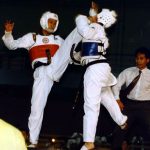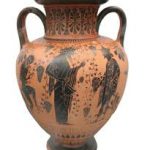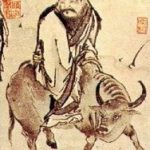Thoughts on the Tao of Communication
Events in my daily life often inspire the focus of my blog posts. I apologize to those of you readers who like a linear structure to the topics. Sometimes I wander afield for a post or two, based on something that inspires a slightly different focus. So, breaking from our current running focus on identifying and neutralizing tactics in communication and negotiation for a bit, I thought I would share some thoughts on philosophy and communication, stemming from my practice of martial arts.
 For many years I have practiced, and now teach Korean-style martial arts – both a popular form called Tae Kwon Do and a lesser-known but very effective form, called Hapkido. I have the wonderful opportunity to practice my martial arts under the regular guidance of a “ninth dan” (or a martial arts “Master” who is a ninth degree black belt) and his late “tenth dan Grand Master” from Korea, who was the founder of the form of Hapkido we practice, and the highest ranked Master of this form in the world. (In contrast, I am a much lower ranked black belt: a “third dan,” or third degree black belt.)
For many years I have practiced, and now teach Korean-style martial arts – both a popular form called Tae Kwon Do and a lesser-known but very effective form, called Hapkido. I have the wonderful opportunity to practice my martial arts under the regular guidance of a “ninth dan” (or a martial arts “Master” who is a ninth degree black belt) and his late “tenth dan Grand Master” from Korea, who was the founder of the form of Hapkido we practice, and the highest ranked Master of this form in the world. (In contrast, I am a much lower ranked black belt: a “third dan,” or third degree black belt.)
 Recently, I was coaching a group of young black belts in a Tae Kwon Do class. My master joined the class at its end and asked the students (all about 14 years old) a series of questions about wisdom, philosophy, and the role of martial arts in their lives. We talked about martial arts and how the philosophy behind them influences other aspects of our lives. This dialogue caused me to reflect on just how much my practice of martial arts has influenced my approach to communication and conflict resolution and problem solving. I thought I would share a few of my thoughts on the subject in this post.
Recently, I was coaching a group of young black belts in a Tae Kwon Do class. My master joined the class at its end and asked the students (all about 14 years old) a series of questions about wisdom, philosophy, and the role of martial arts in their lives. We talked about martial arts and how the philosophy behind them influences other aspects of our lives. This dialogue caused me to reflect on just how much my practice of martial arts has influenced my approach to communication and conflict resolution and problem solving. I thought I would share a few of my thoughts on the subject in this post.
Among many things, the practice of martial arts has taught me to be more situationally aware. That is to be alert to my surroundings and the overall context. This awareness does not only focus person safety, but, in the context of important discussions, awareness of the room, how people sit, where they sit, what the alignments are, what the “proxemics” (or how people claim and use space) look like, who are their apparent allies, what are the apparent relationship dynamics, and more. Basically, when I come into a mediation session or an important meeting, I note things: Who is sitting where? Why have they staked out that location? With whom are they sitting? What are the potential alignments, alliances, competitions, and conflicts? What factors affect their sense of comfort? It helps me to put the whole communication in context. I use this awareness to craft my approach and my specific communications.
A fundamental concept of Hapkido as a martial art is the concept of “yew-wahn-hah,” or “soft-round-together.” This phrase embodies the concept of yielding to an attacker’s oncoming energy (either by slight redirection, body movement and avoidance, or managing the distance) then redirecting that energy and bringing the forces together in a response that effectively manages the “attack.” I had the pleasure of working with our late Korean Grand Master, and filming him training other high level black belt masters from around the world. During these sessions, one thing that he repeatedly emphasized was soft, smooth movement that places you just where you need to be.
 Applying this philosophy in the context of communication seems pretty easy, but it definitely takes on-going practice. When someone gets angry and launches a personal (verbal) attack, a natural response is to launch a counter attack of equal intensity – more or less engaging in a verbal boxing match. But, as with real boxing, this can be exhausting (at least emotionally) and can deeply and permanently harm an important relationship, as boxing often bloodies the opponents. Applying the concept of soft-round-together, we can deflect the personal verbal aggression and suffer little or no personal harm. We take what is directed against us to understand more deeply what is bothering the verbal “assailant,” and to allow them to ventilate their pent-up energy and frustration. By taking the time to respond softly and then coming around to bring together a thoughtful response – perhaps even at a later time, we protect ourselvesfrom the “assault” and can give ourselves the time necessary for a thoughtful response that is designed to effectively manage the relationship from a long-term and more strategic perspective. By redirecting the energy expended by the other, we show ourselves as a person in control of the situation. While this may seem to be a slow approach, martial artists distinguish between quickness and speed. One can respond with appropriate quickness.
Applying this philosophy in the context of communication seems pretty easy, but it definitely takes on-going practice. When someone gets angry and launches a personal (verbal) attack, a natural response is to launch a counter attack of equal intensity – more or less engaging in a verbal boxing match. But, as with real boxing, this can be exhausting (at least emotionally) and can deeply and permanently harm an important relationship, as boxing often bloodies the opponents. Applying the concept of soft-round-together, we can deflect the personal verbal aggression and suffer little or no personal harm. We take what is directed against us to understand more deeply what is bothering the verbal “assailant,” and to allow them to ventilate their pent-up energy and frustration. By taking the time to respond softly and then coming around to bring together a thoughtful response – perhaps even at a later time, we protect ourselvesfrom the “assault” and can give ourselves the time necessary for a thoughtful response that is designed to effectively manage the relationship from a long-term and more strategic perspective. By redirecting the energy expended by the other, we show ourselves as a person in control of the situation. While this may seem to be a slow approach, martial artists distinguish between quickness and speed. One can respond with appropriate quickness.
In the philosophy of the Tao Te Chin[1] as well as in the philosophy of many martial arts, we value things as much for what they don’t have as we do for what they have.
A popular verse from Lao Tzu is entitled, The Uses of Not, or sometimes entitled Emptiness. One popular translation reads as follows:
The Uses of Not
Thirty spokes meet in the hub. Where the wheel isn’t is where it is useful.
Hollowed out clay makes a pot. Where the pot isn’t is where it is useful.
Cut doors and windows to make a room. Where the room isn’t is where there’s room for you.
So, the profit in what is, is in the use of what isn’t.
 How does this translate to communication skills? I find that reminding myself of the “uses of not” is so helpful in managing what might otherwise be emotional communications. When I work with people who have recently lost a promotion or suffered a set back, I often find that it is so helpful to focus on the many things in their lives that do not hinge on the promotion, and the many opportunities hidden in personal setbacks. I find the power of silence as a welcoming space for another to fill is immensely powerful.
How does this translate to communication skills? I find that reminding myself of the “uses of not” is so helpful in managing what might otherwise be emotional communications. When I work with people who have recently lost a promotion or suffered a set back, I often find that it is so helpful to focus on the many things in their lives that do not hinge on the promotion, and the many opportunities hidden in personal setbacks. I find the power of silence as a welcoming space for another to fill is immensely powerful.
I also think of the power of silence, when used to calm a situation, rather than escalating the shouting and volume of the conversation. I think of the power of cool when used to avoid a hot response. I think of the power of listening to what is not said – at least verbally. I find a sense of confidence and peace that comes from being prepared and comfortable with yielding, deflecting, re-directing, and channeling energy to a positive outcome. I find it far less stressful to be prepared mentally in a different way. Rather than thinking I must overcome in an argument, I think of the power of water. Water flows around the stone as an obstacle, but the stone is worn away. Staying in harmony with my own sense of values and my own commitment is often a challenge, but I find it to be a wonderful anchoring point.
the shouting and volume of the conversation. I think of the power of cool when used to avoid a hot response. I think of the power of listening to what is not said – at least verbally. I find a sense of confidence and peace that comes from being prepared and comfortable with yielding, deflecting, re-directing, and channeling energy to a positive outcome. I find it far less stressful to be prepared mentally in a different way. Rather than thinking I must overcome in an argument, I think of the power of water. Water flows around the stone as an obstacle, but the stone is worn away. Staying in harmony with my own sense of values and my own commitment is often a challenge, but I find it to be a wonderful anchoring point.
Bruce MacAllister, February 4, 2014
©2014, Bruce J. MacAllister, all rights reserved.

pfeifer
Bruce MacAllister
pfeifer
Bruce MacAllister
Emmanuel
Bruce MacAllister
Emmanuel
Bruce MacAllister
Wendy
Bruce MacAllister
Wendy
Bruce MacAllister